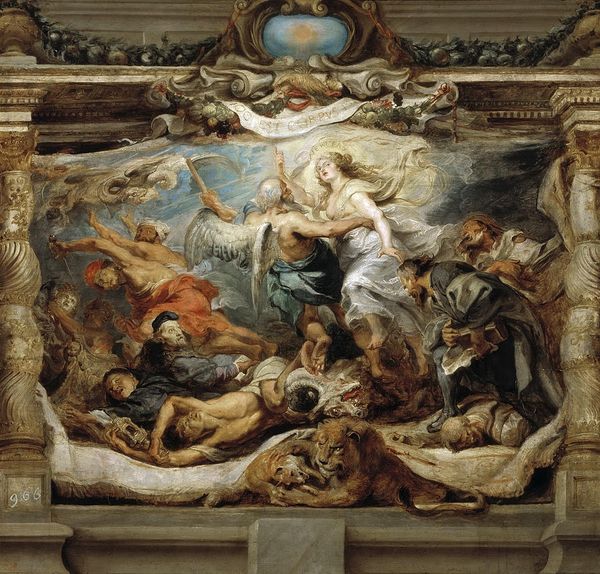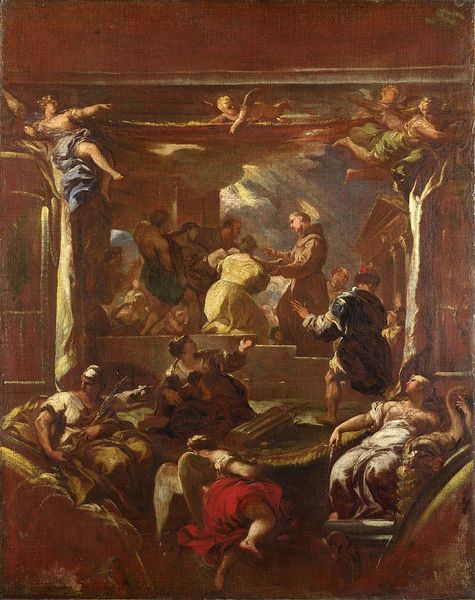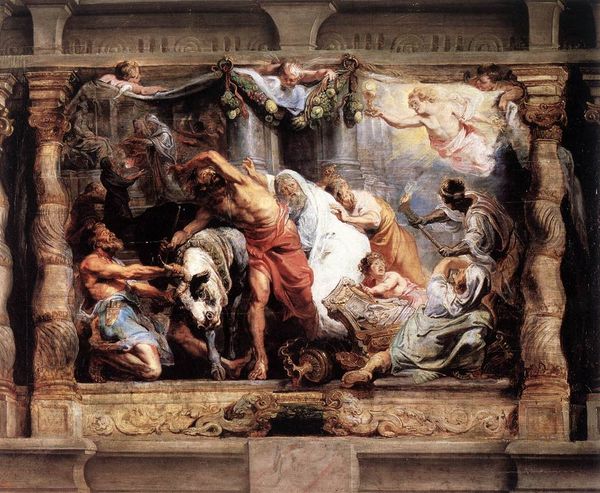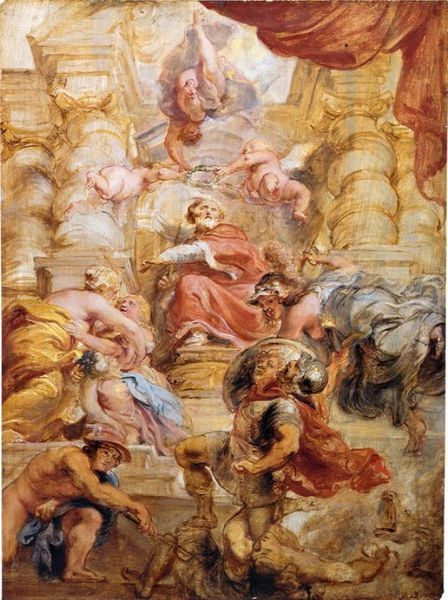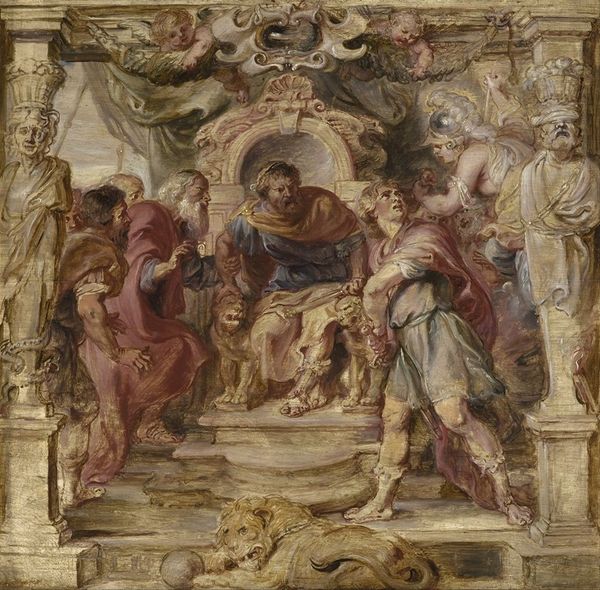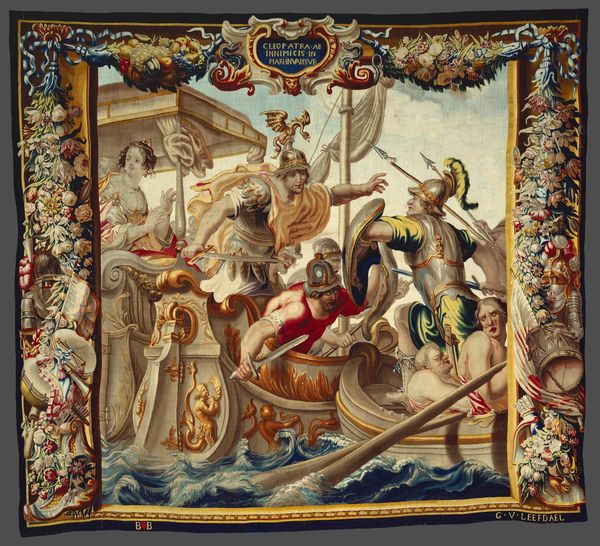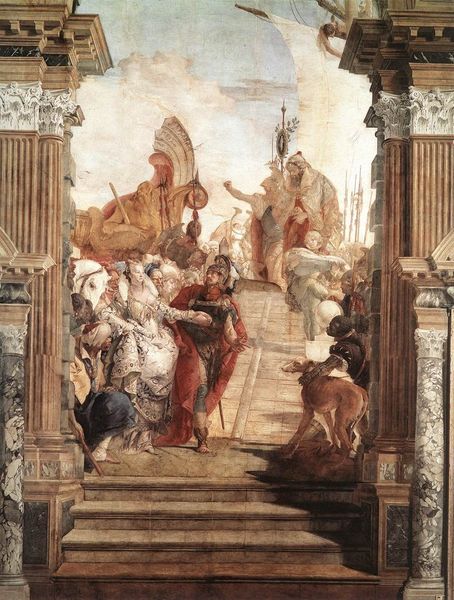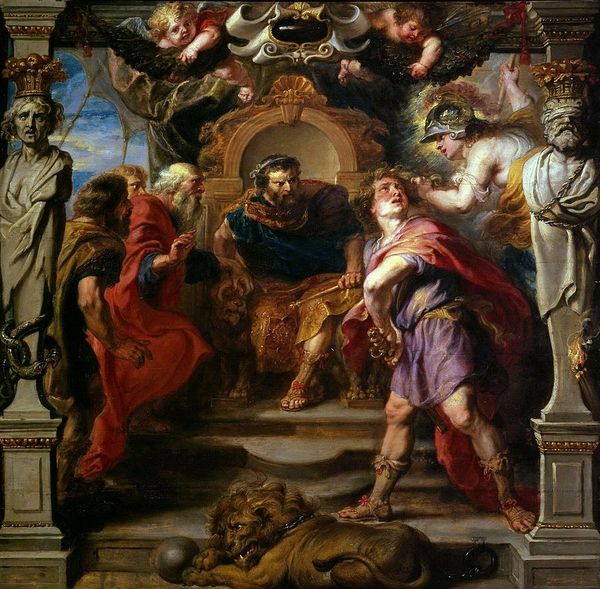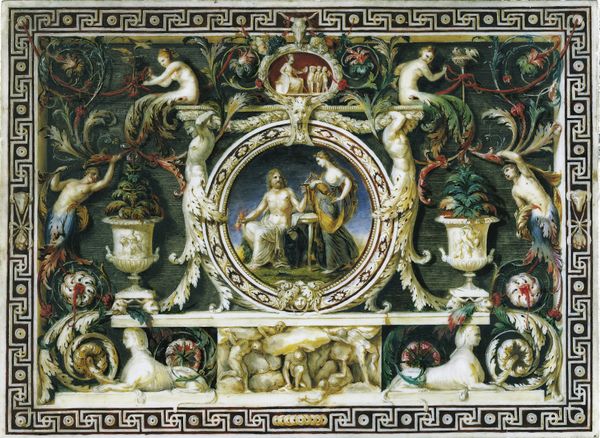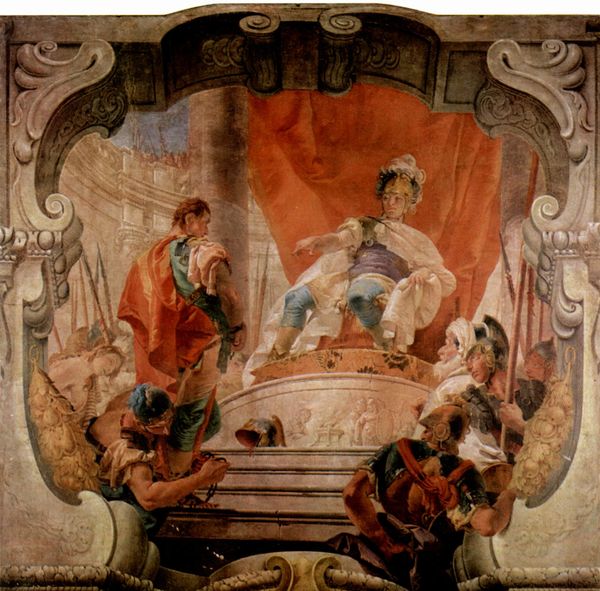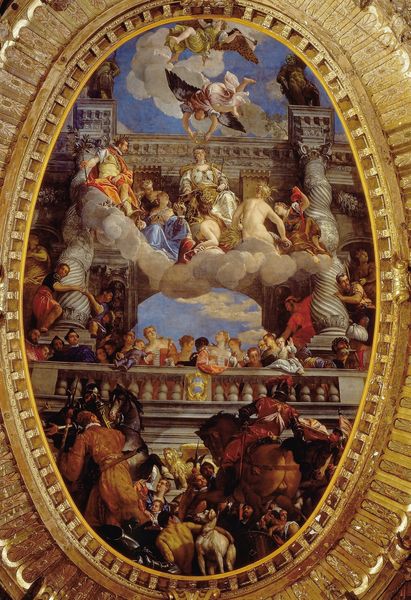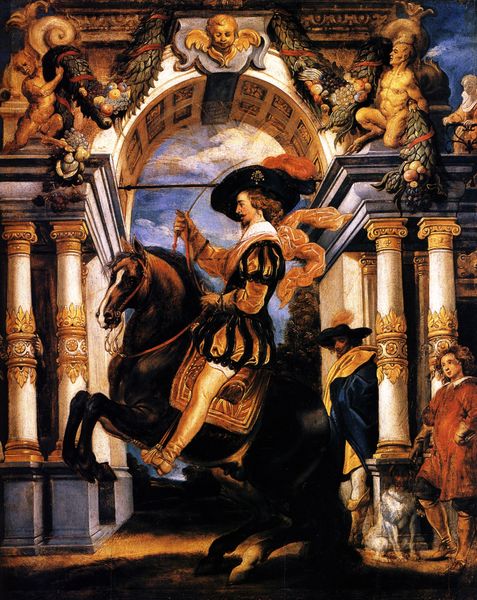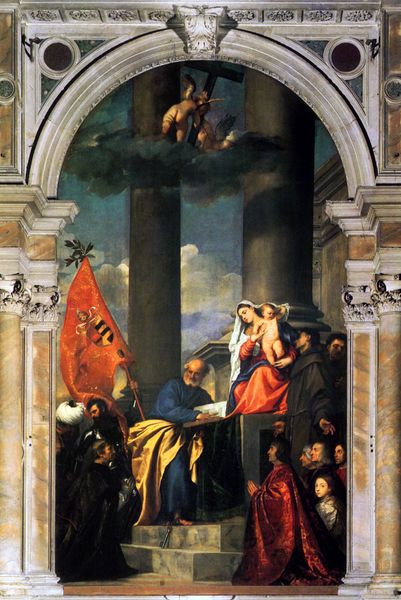
painting, oil-paint, fresco
#
portrait
#
narrative-art
#
baroque
#
painting
#
oil-paint
#
figuration
#
fresco
#
history-painting
Copyright: Public domain
Curator: Here we have Peter Paul Rubens's monumental oil painting "The Meeting of Abraham and Melchizedek", created around 1625, and now residing at the National Gallery of Art in Washington, DC. What strikes you first about it? Editor: The sense of dramatic architecture framing a really tender moment. It feels like a stage set. I’m instantly drawn to Abraham's humble posture. The narrative unfolds against such a structured backdrop. It makes the sacred feel very human, doesn't it? Curator: Precisely. Observe how Rubens employs dynamic diagonals and contrasting light to animate the biblical encounter. Semiotically, consider the formal exchange as the focal point, mediated by gesture and gaze. The architectural frame adds a layer, a perspective into a divine or historical event. Editor: I find that the composition enhances the painting’s tension, its almost operatic drama. Abraham's presentation of tithes and the priest's calm receiving of the gifts suggest this pivotal Old Testament story, that becomes incredibly relatable. There's such richness in texture and tone! And the wolf. I wonder what a symbol the wolf brings to the encounter? Curator: An interesting interpretation. Rubens, characteristic of the Baroque style, often utilized symbolism, particularly in a piece commissioned for ecclesiastical purposes. Note the hierarchy established through pictorial organization: the figures are precisely placed relative to one another. This emphasizes not merely historical documentation but theological validation. Editor: Absolutely! What about Rubens, how his experiences as a diplomat may have added some political elements. I'm really in tune with Rubens as a narrator; his personal connection adds richness that invites the observer into conversation with the painting. Curator: That consideration of artist biography opens intriguing vectors of interpretation. Perhaps one sees statecraft interwoven into scriptural narratives? Let's suggest instead that in its detailed formal relationships and rhetorical persuasiveness, Rubens' work underscores, and not undercuts, canonical ideology. Editor: Maybe both are possible! In this conversation with “The Meeting,” I admire it all that much more! Curator: Indeed. Approaching these art objects with intellectual humility allows for continuously renewed encounters, it's the point.
Comments
No comments
Be the first to comment and join the conversation on the ultimate creative platform.
